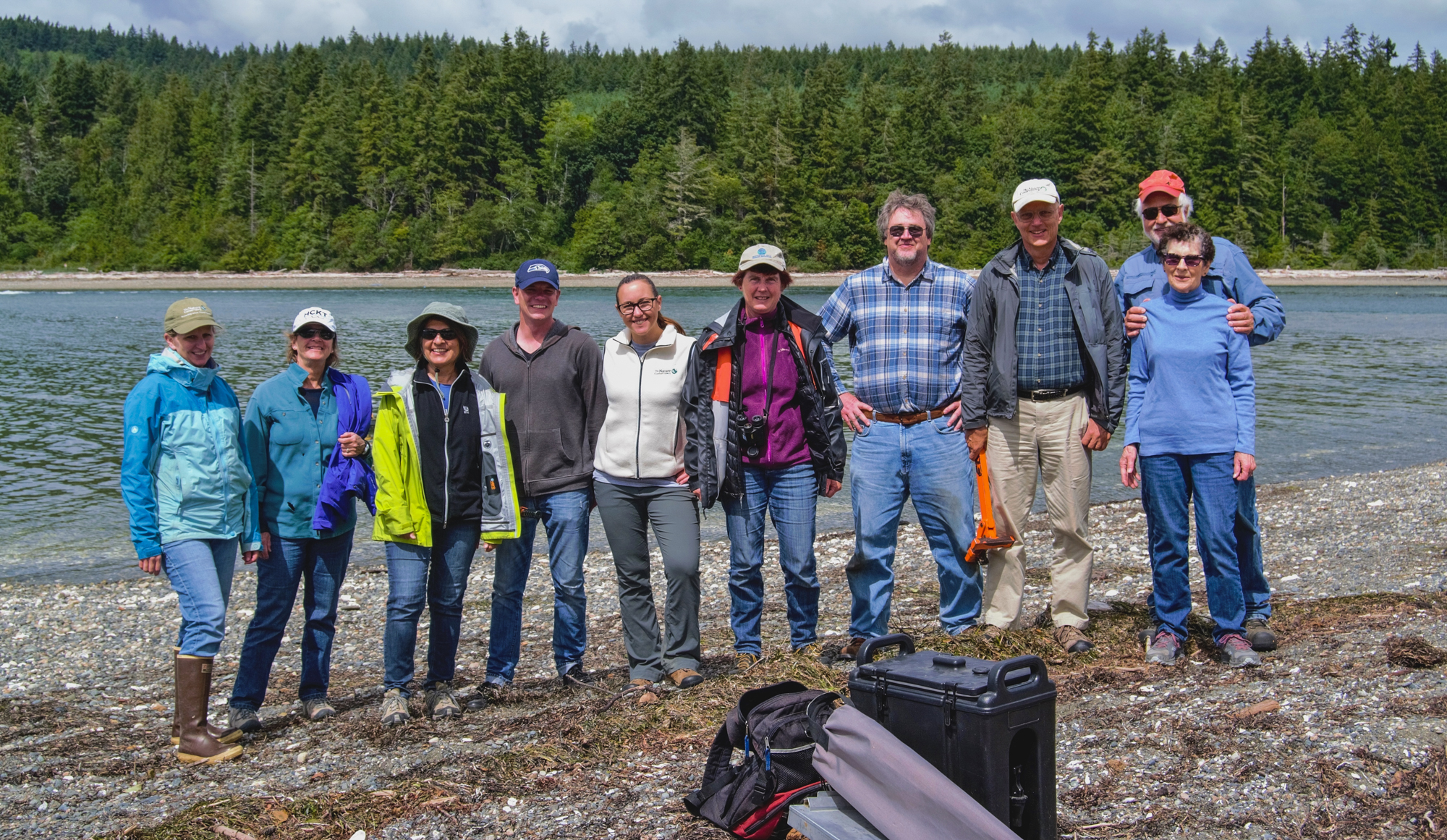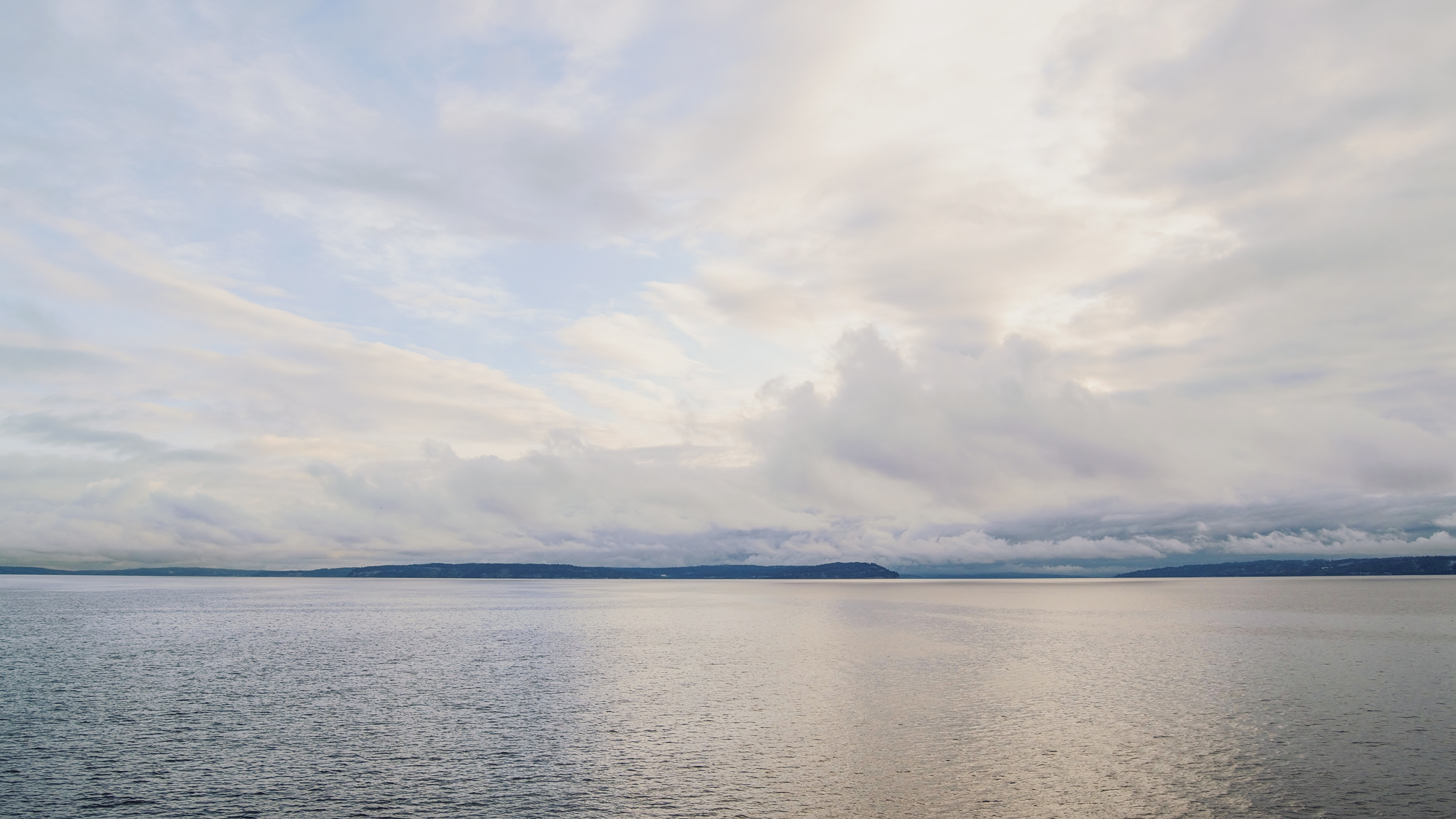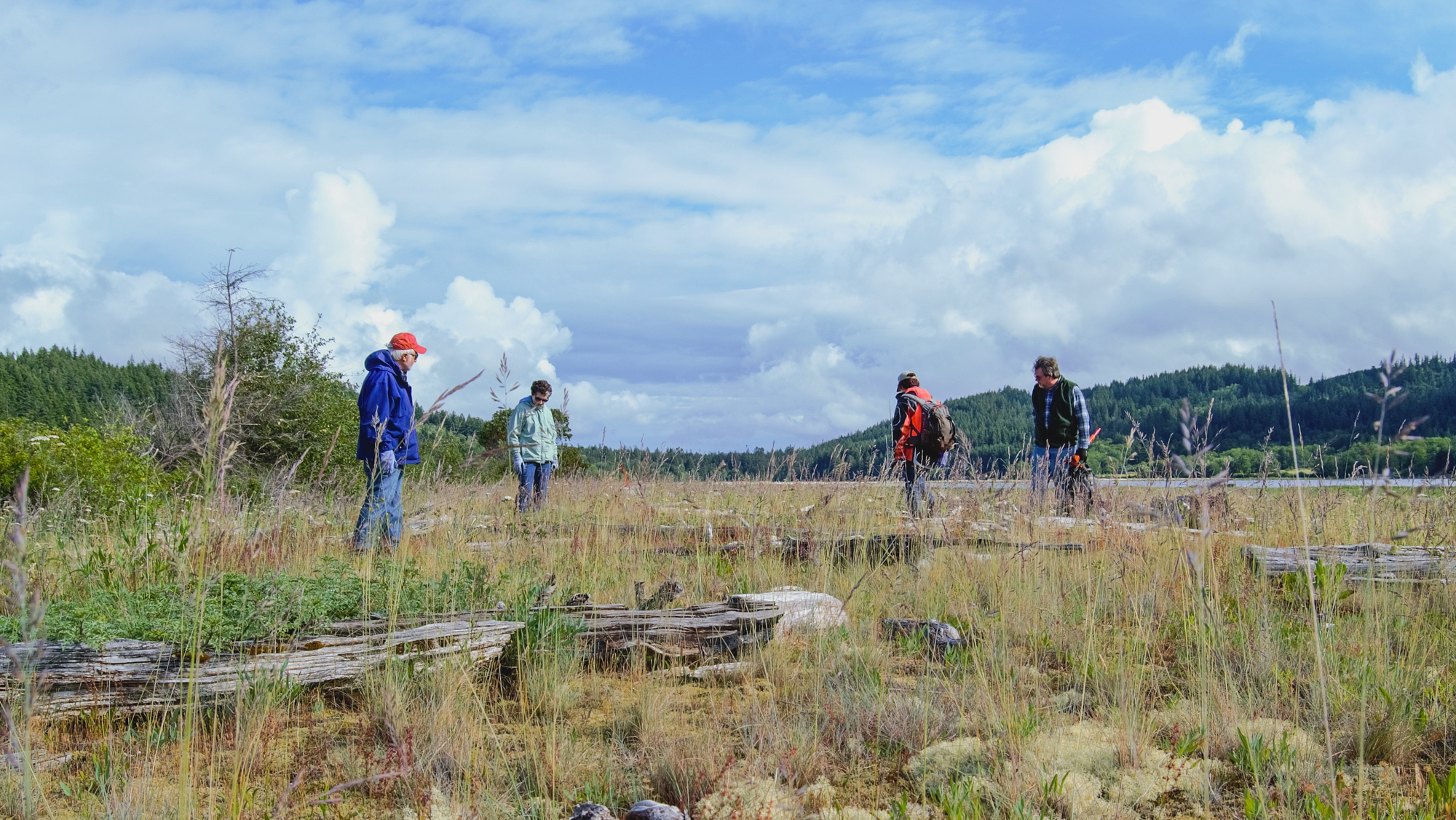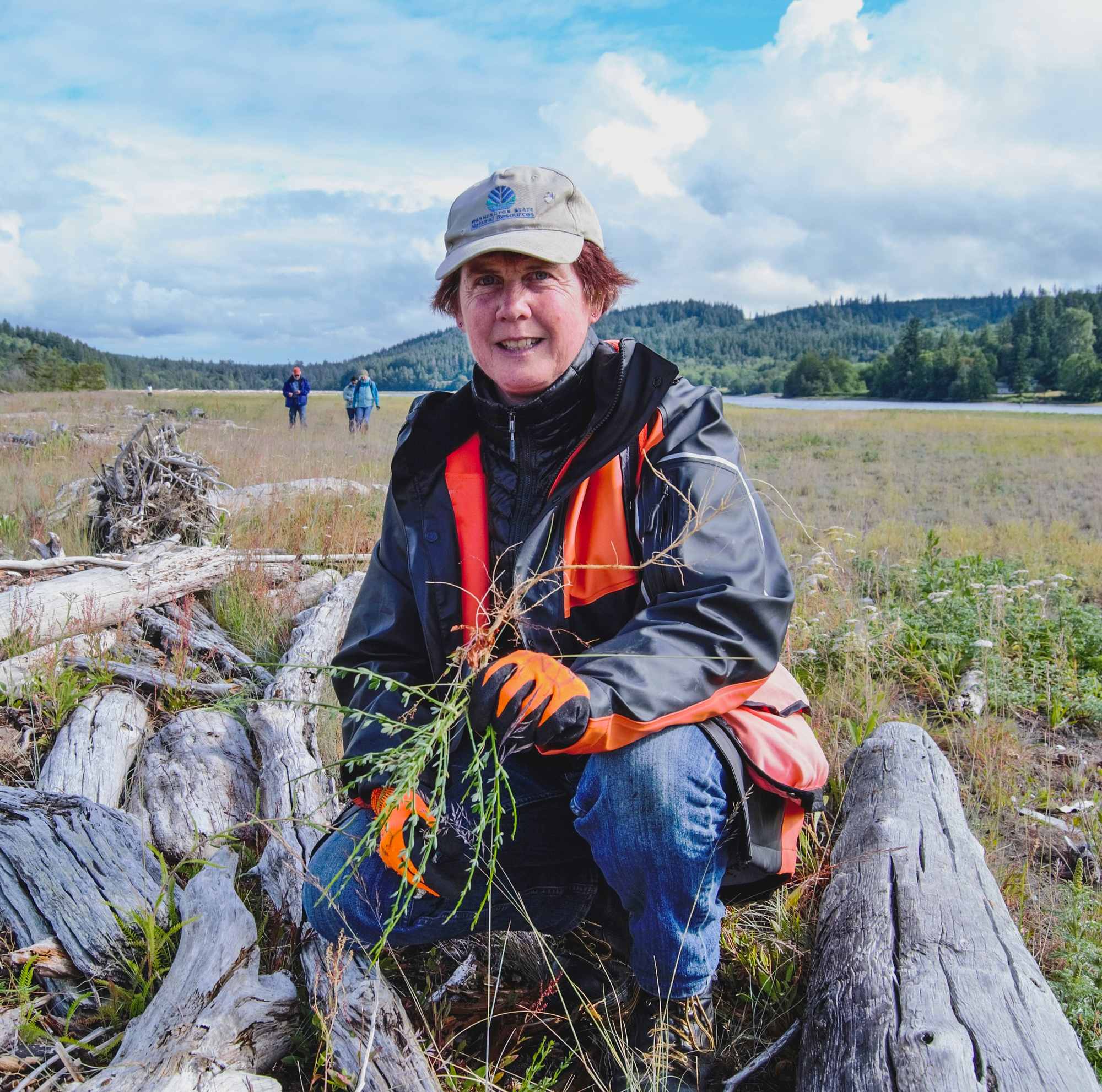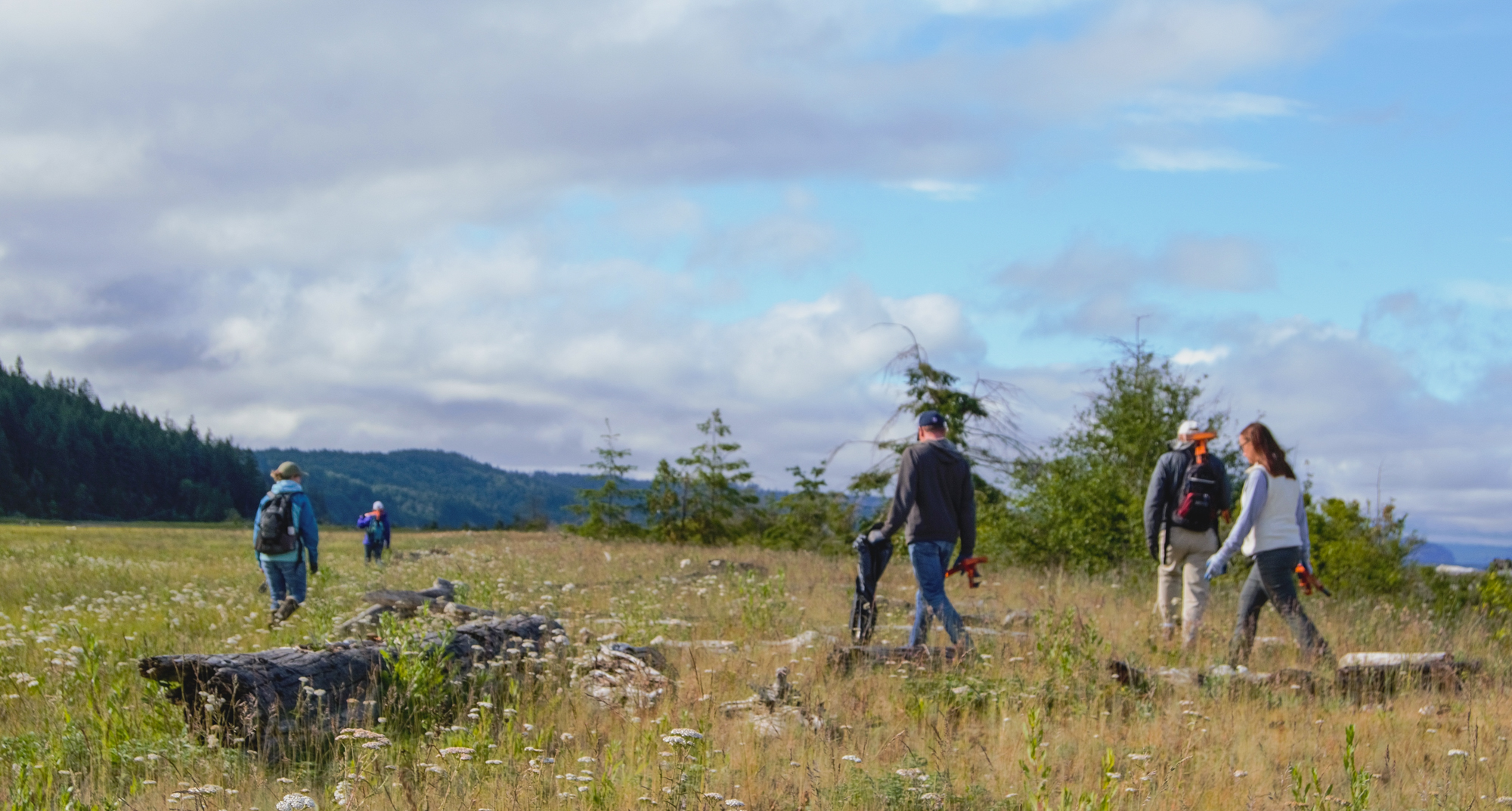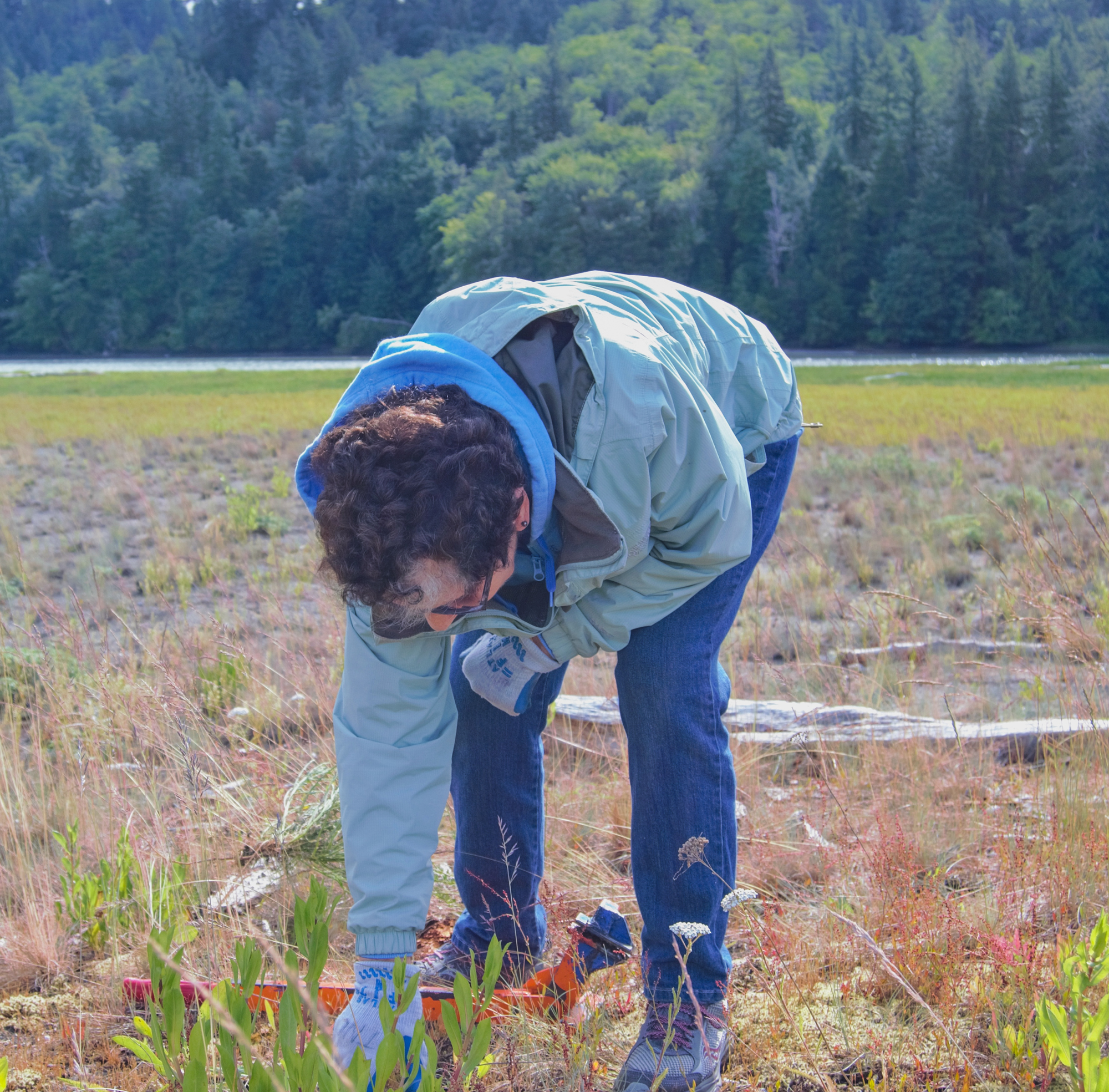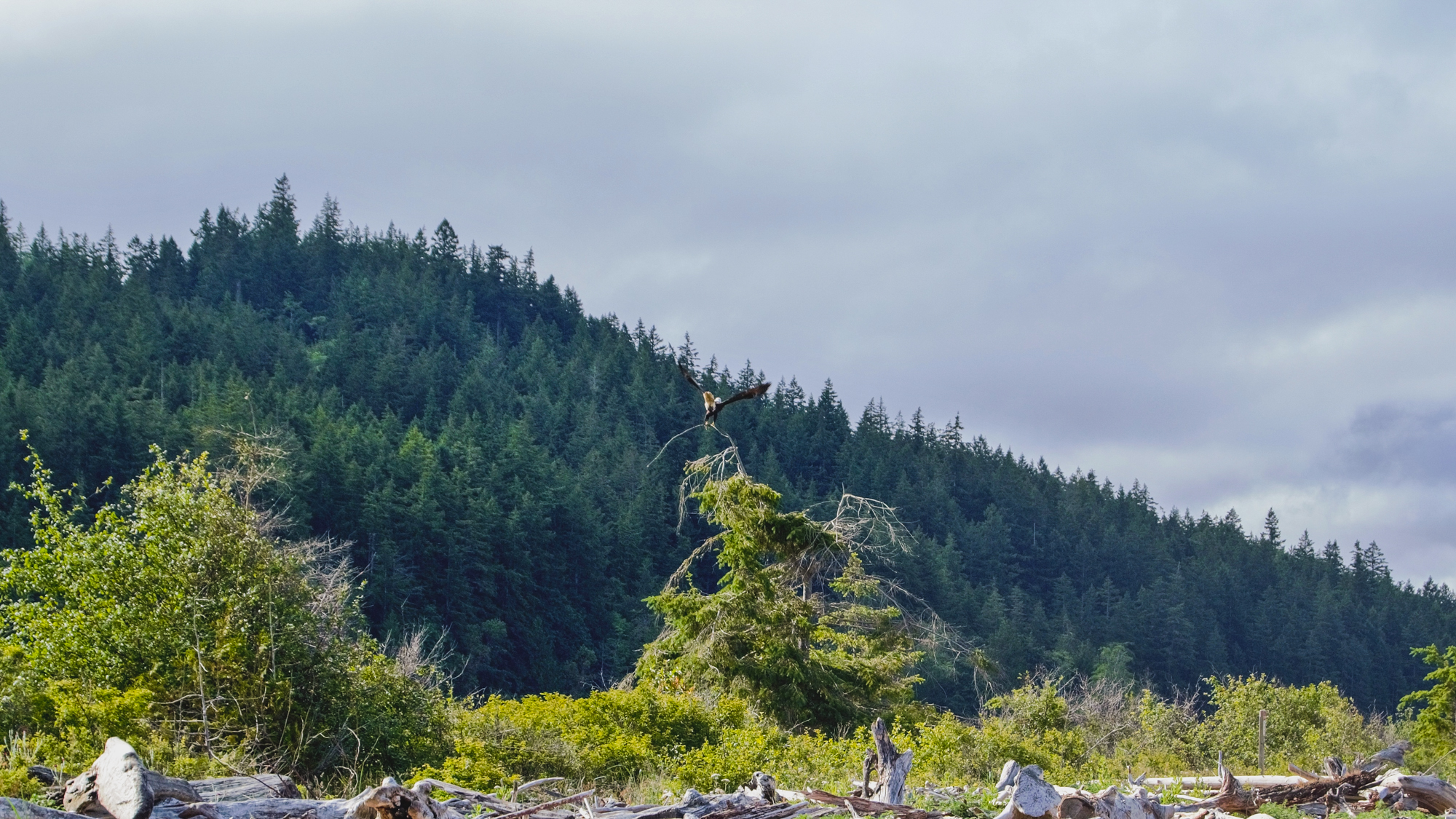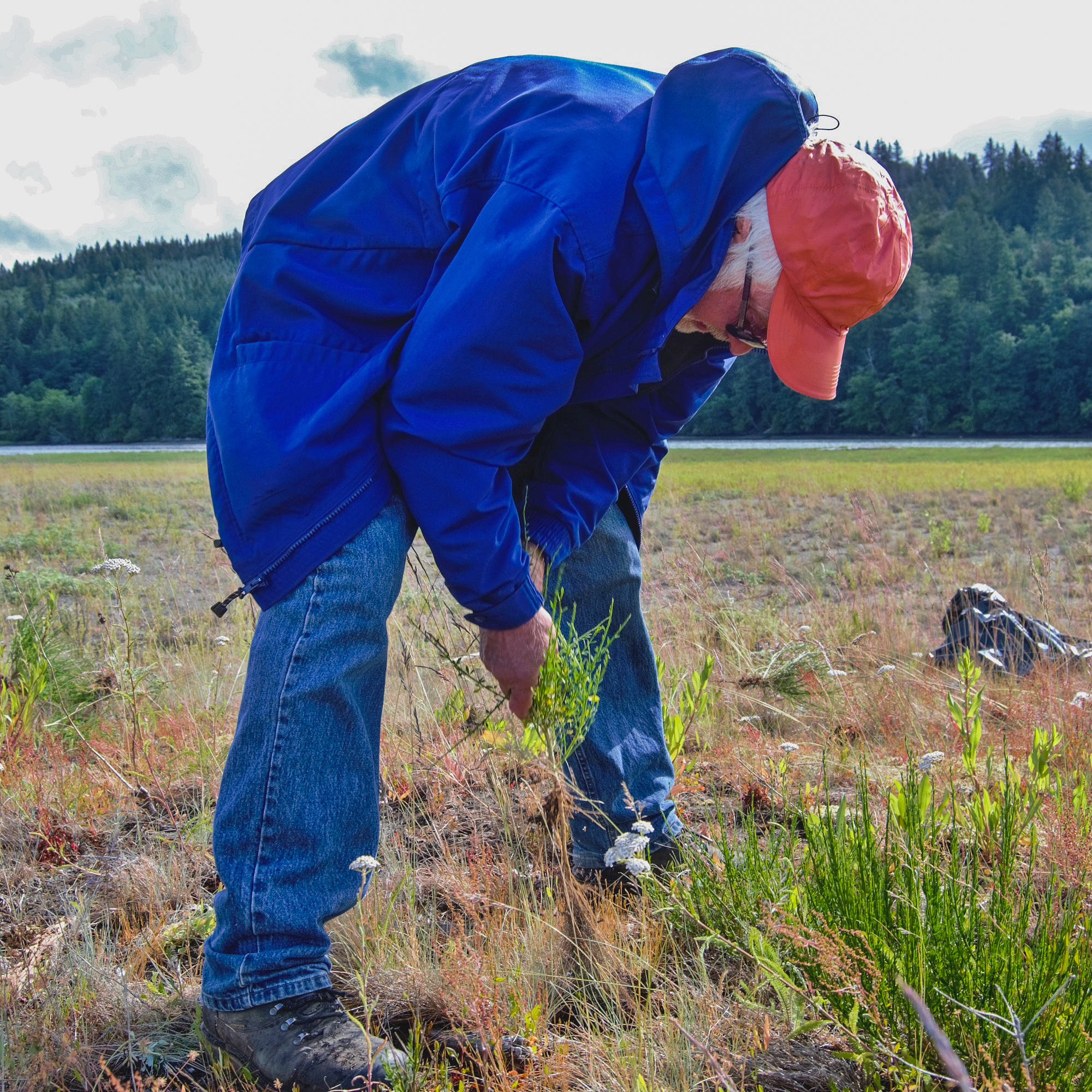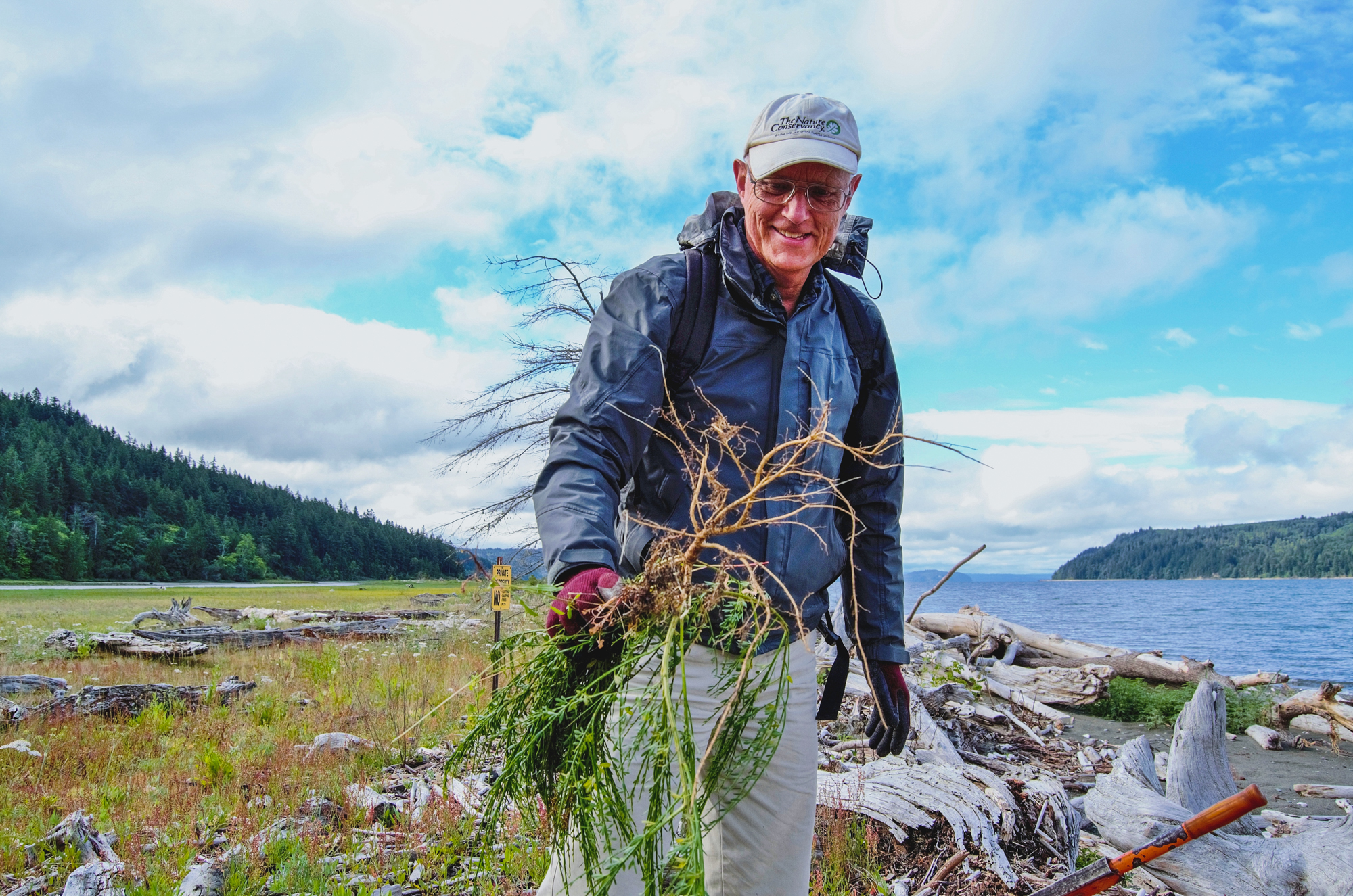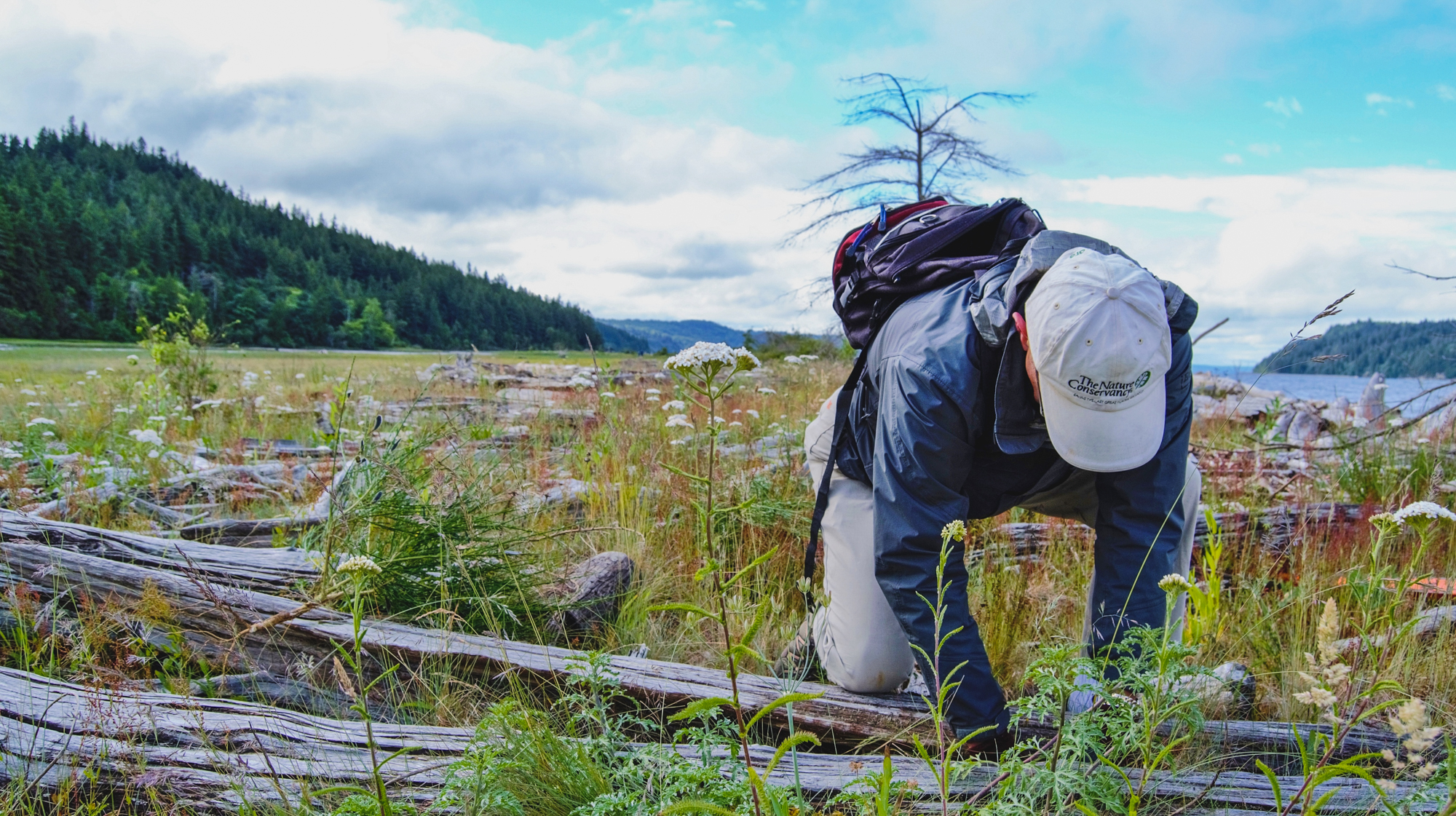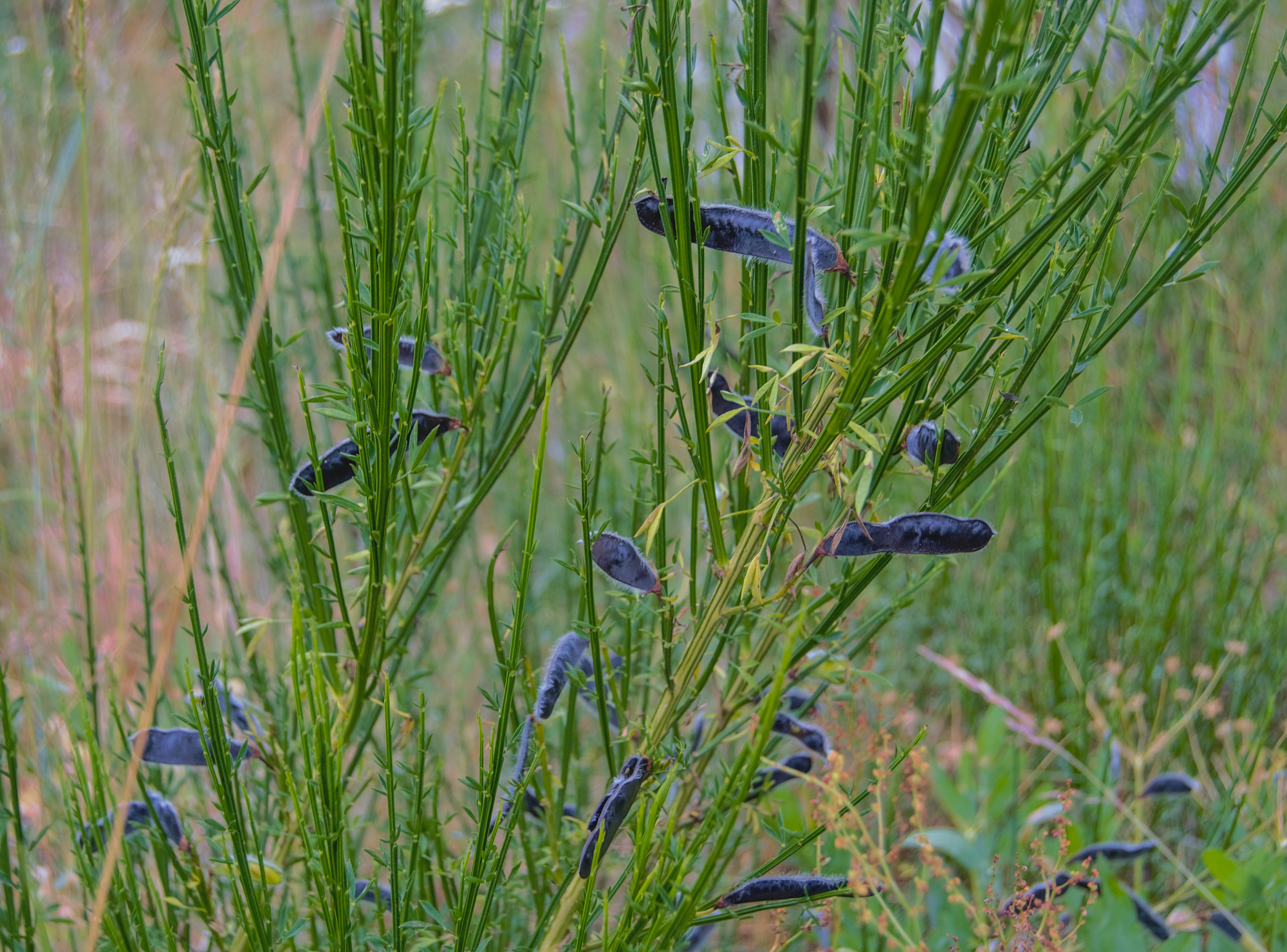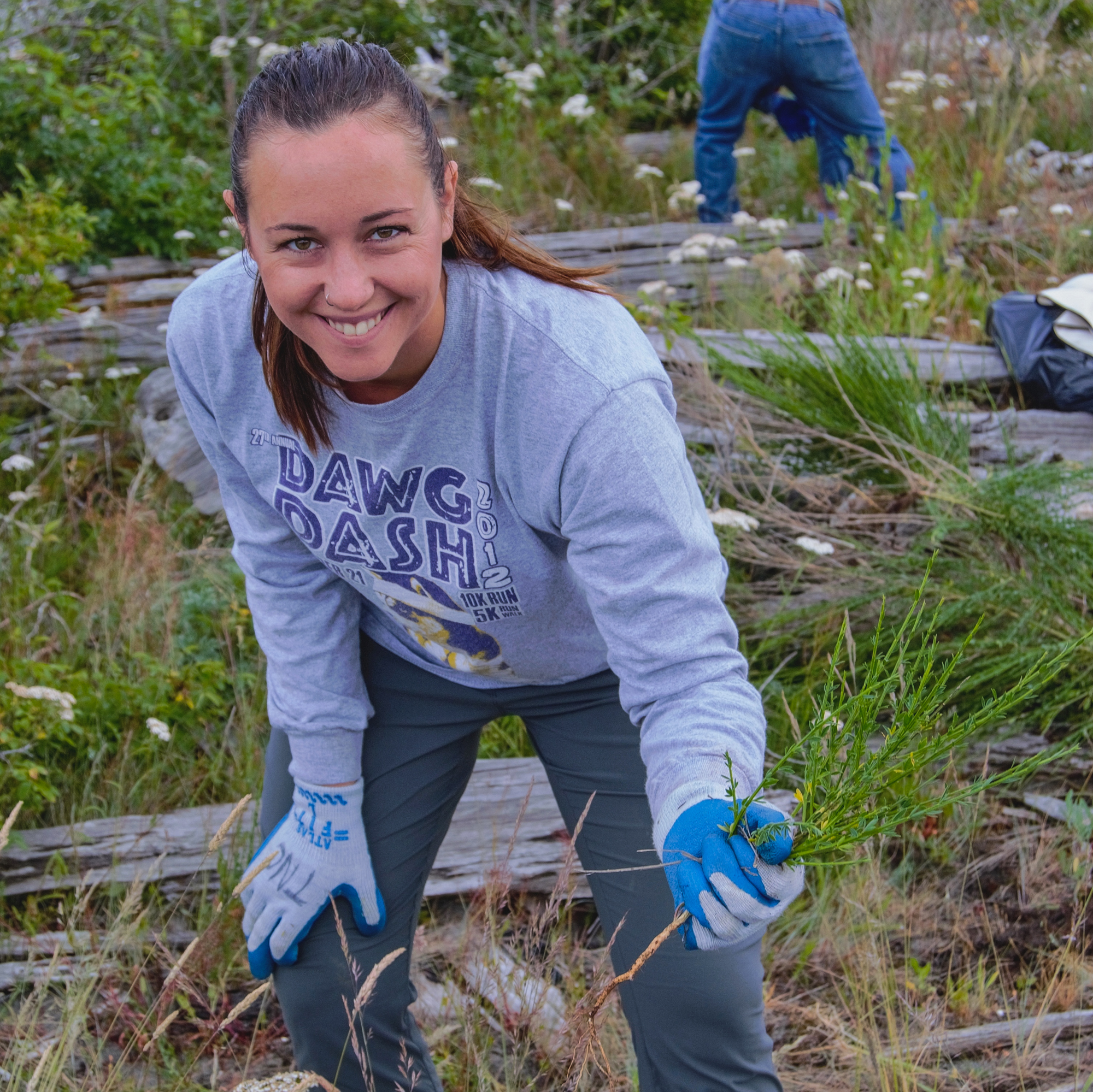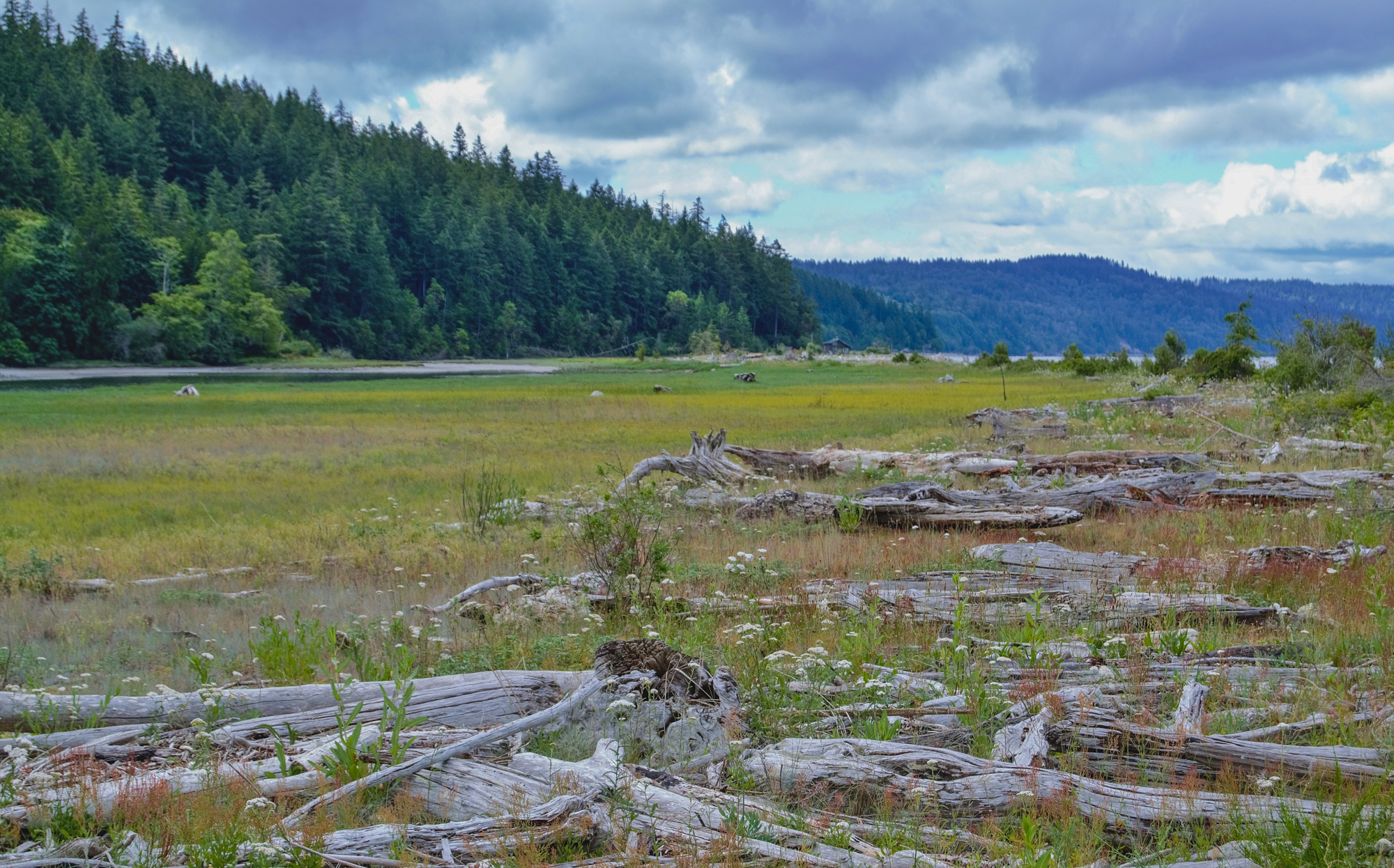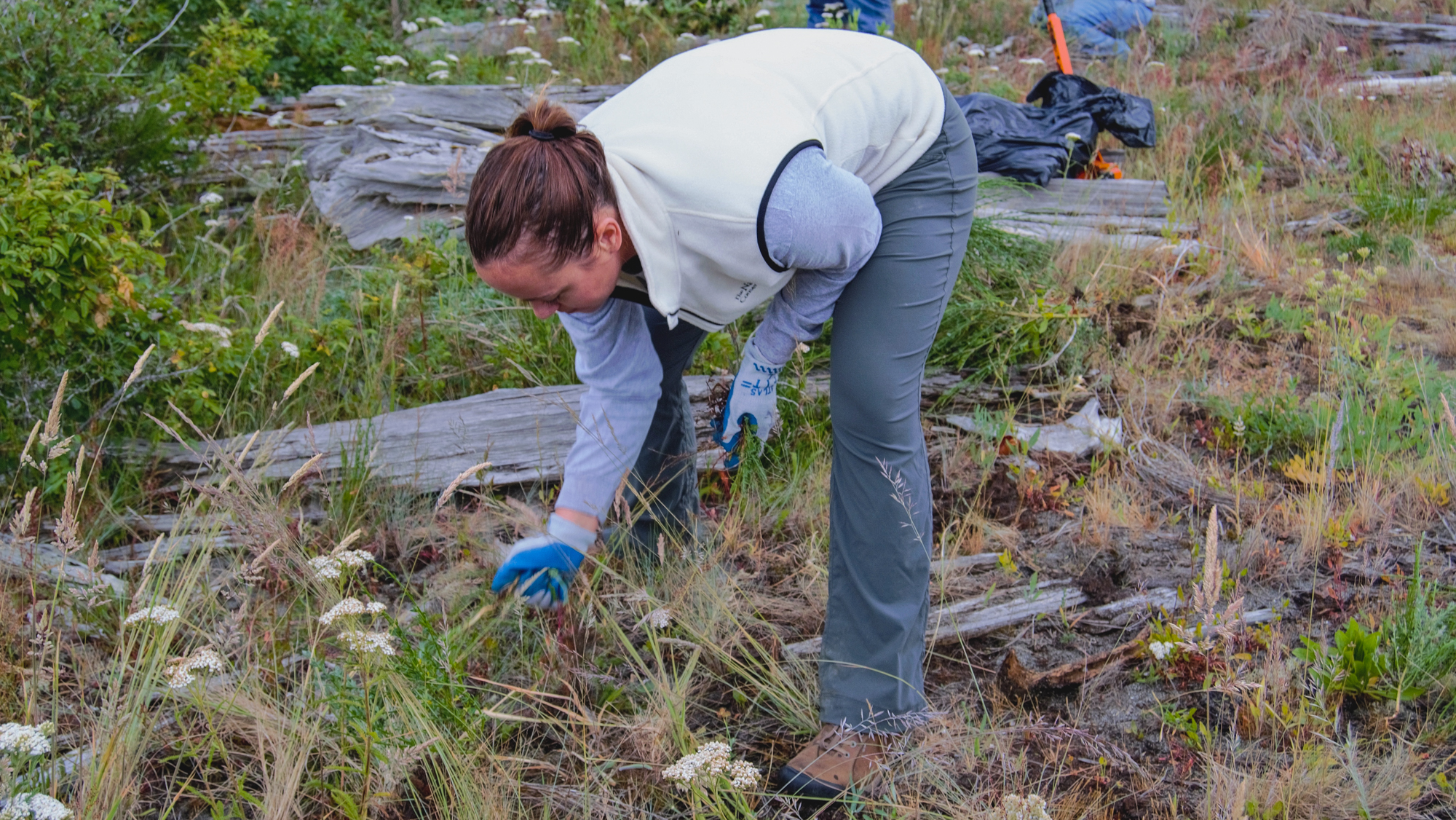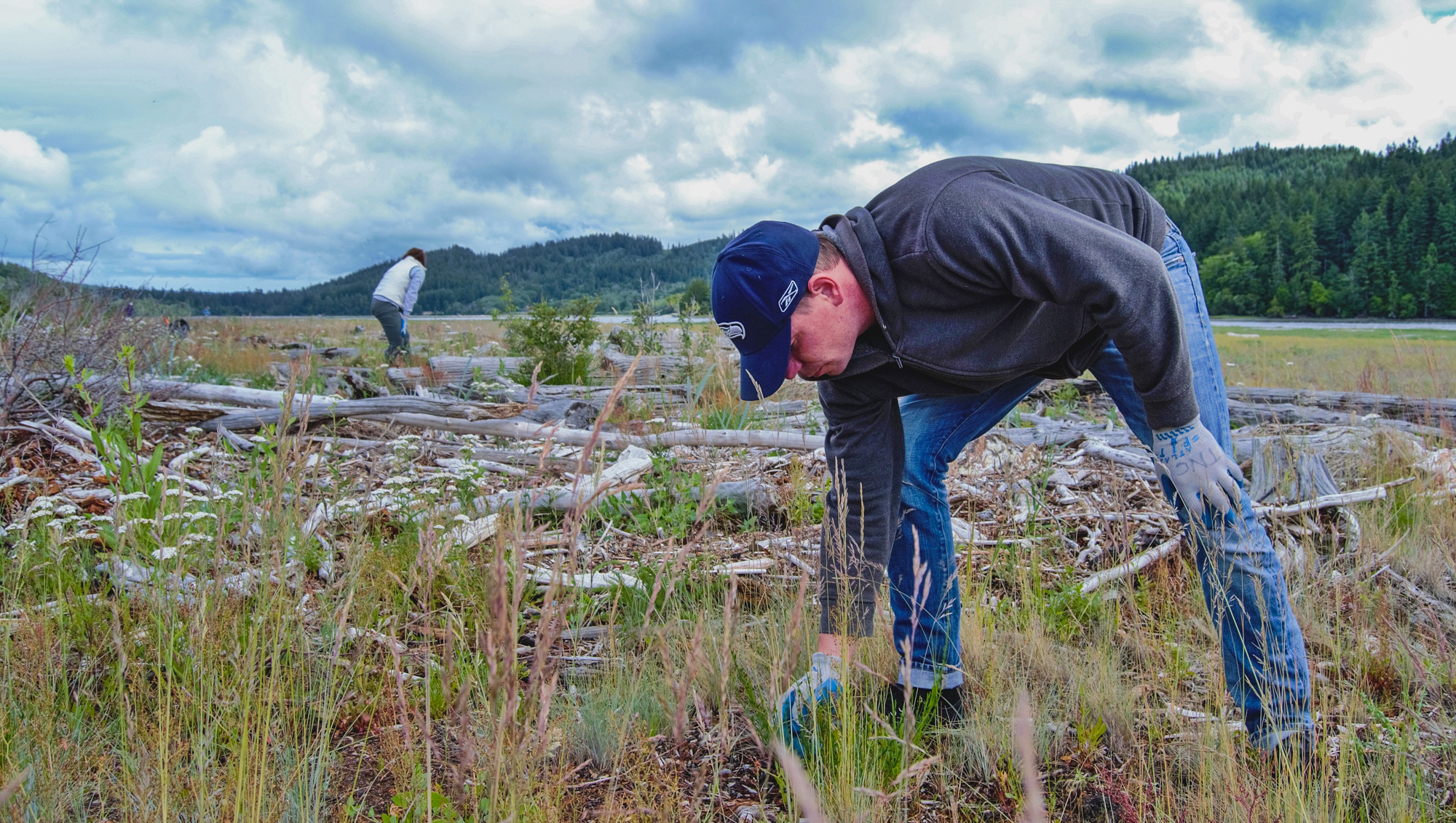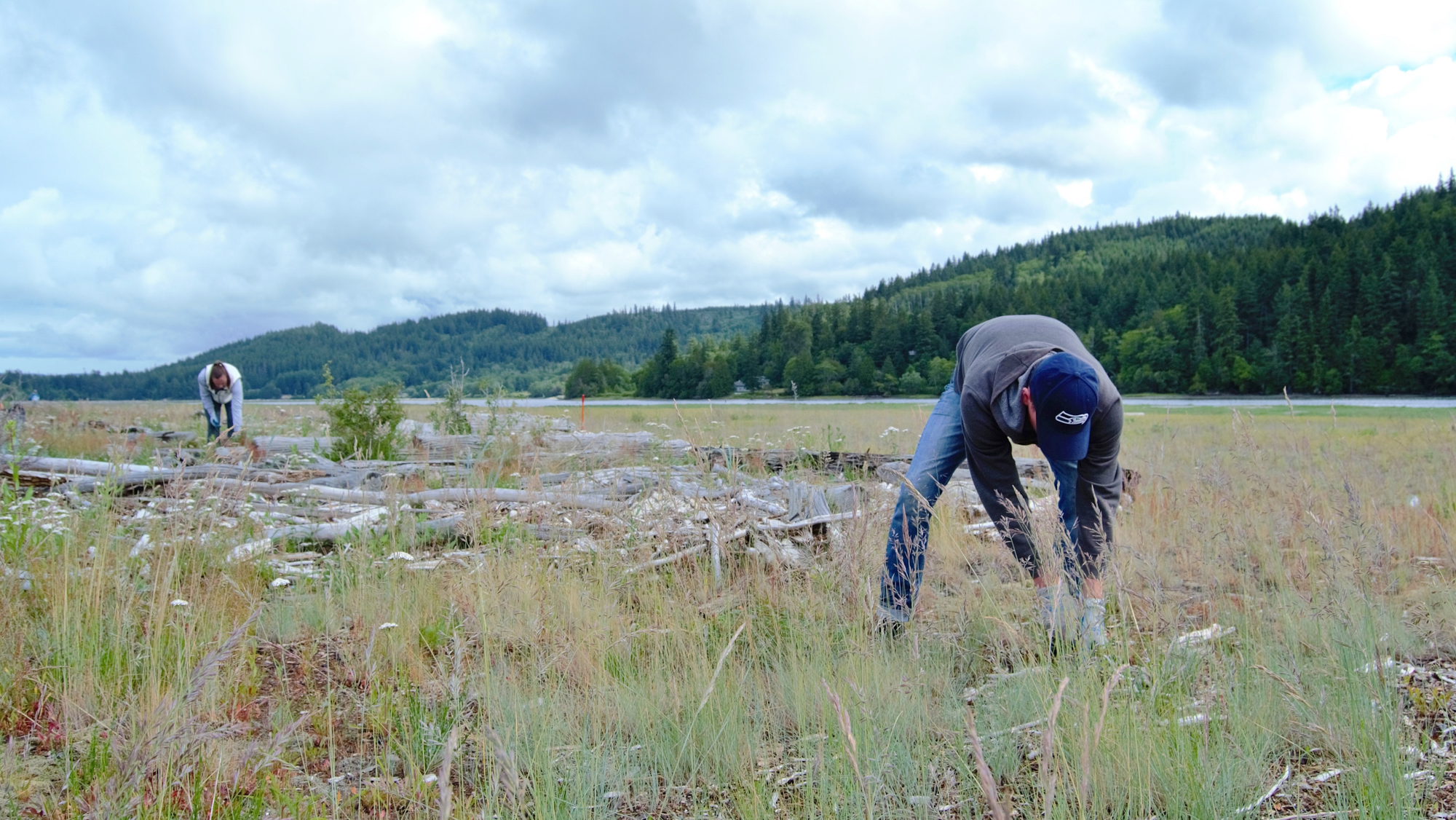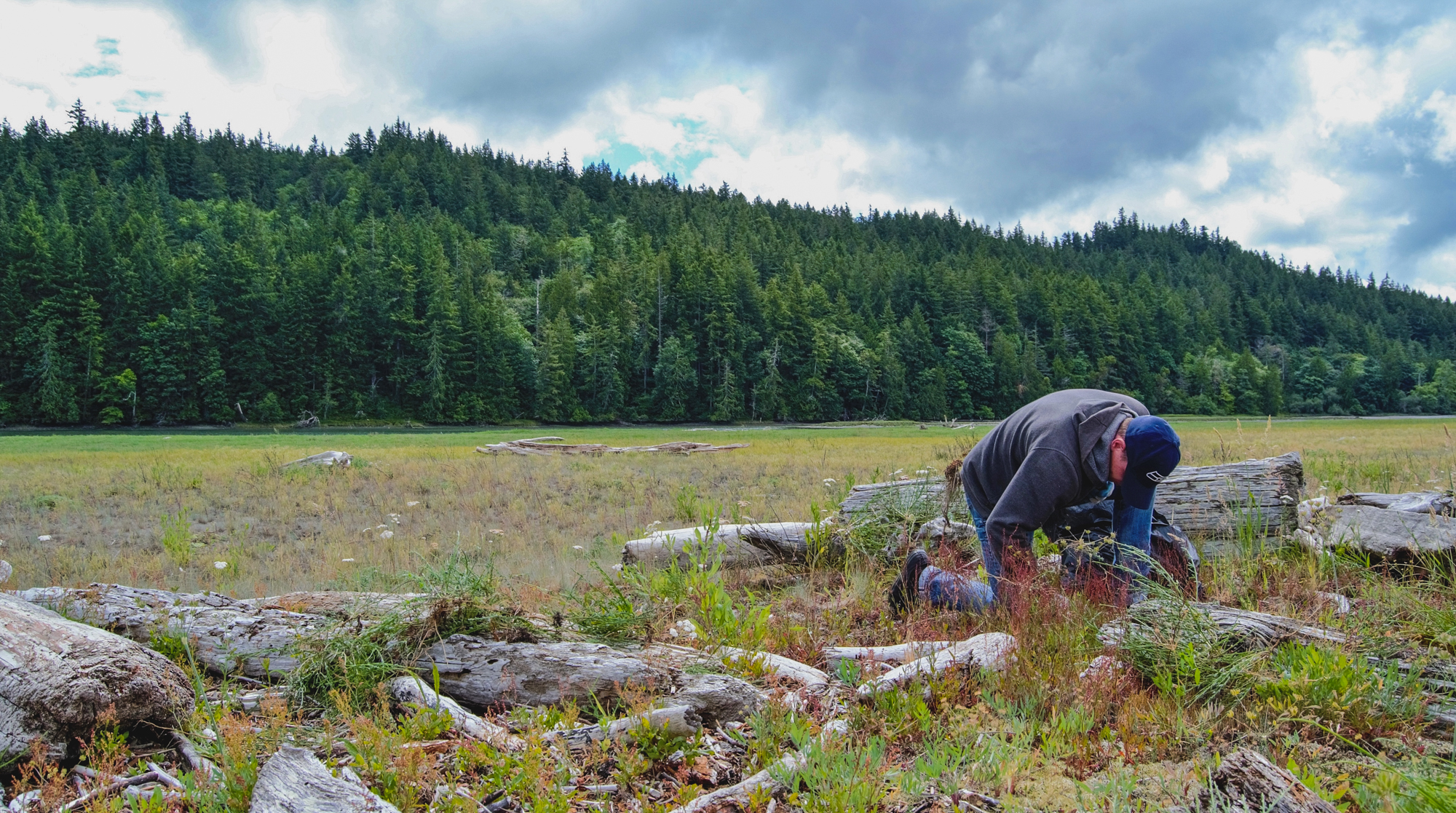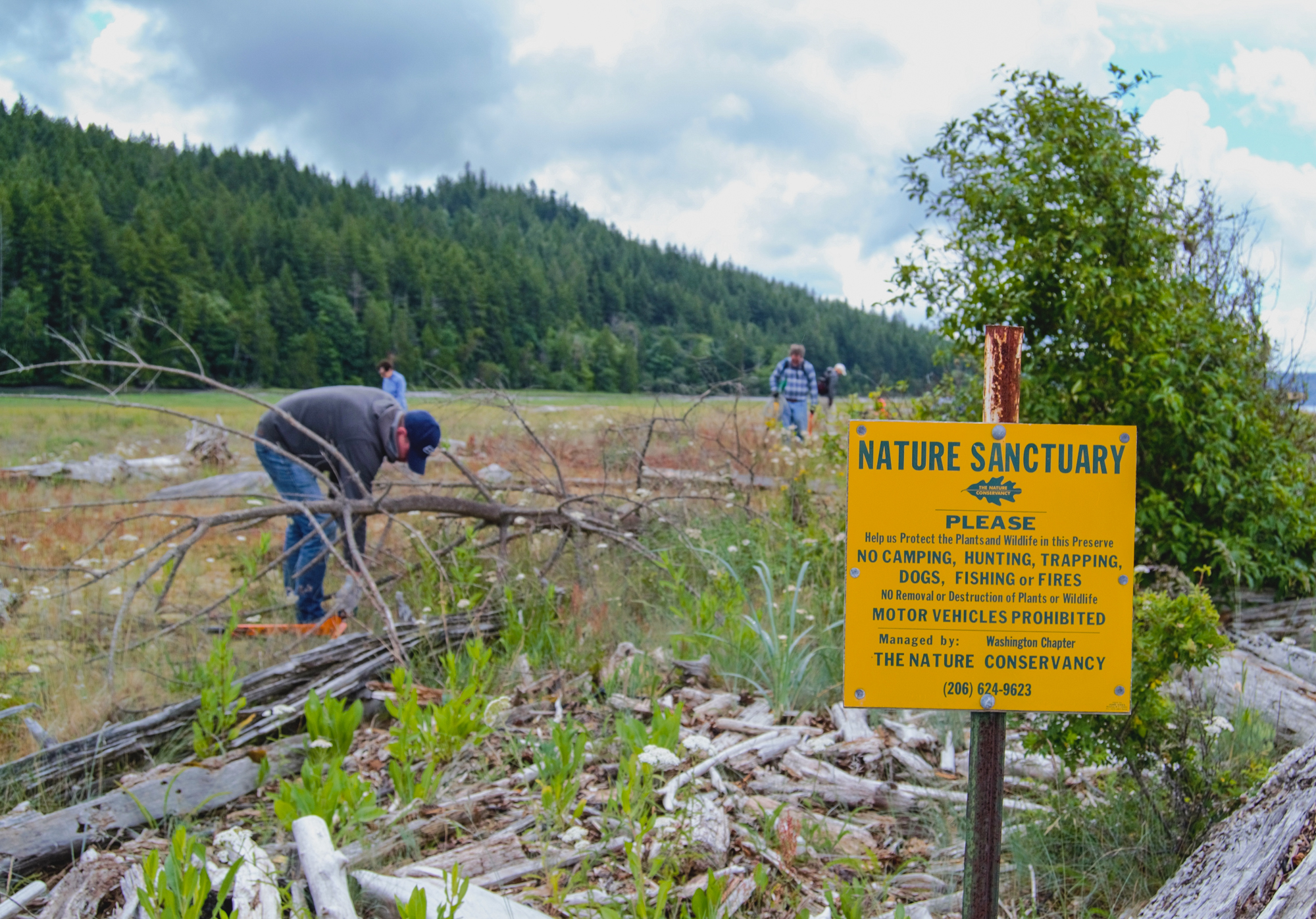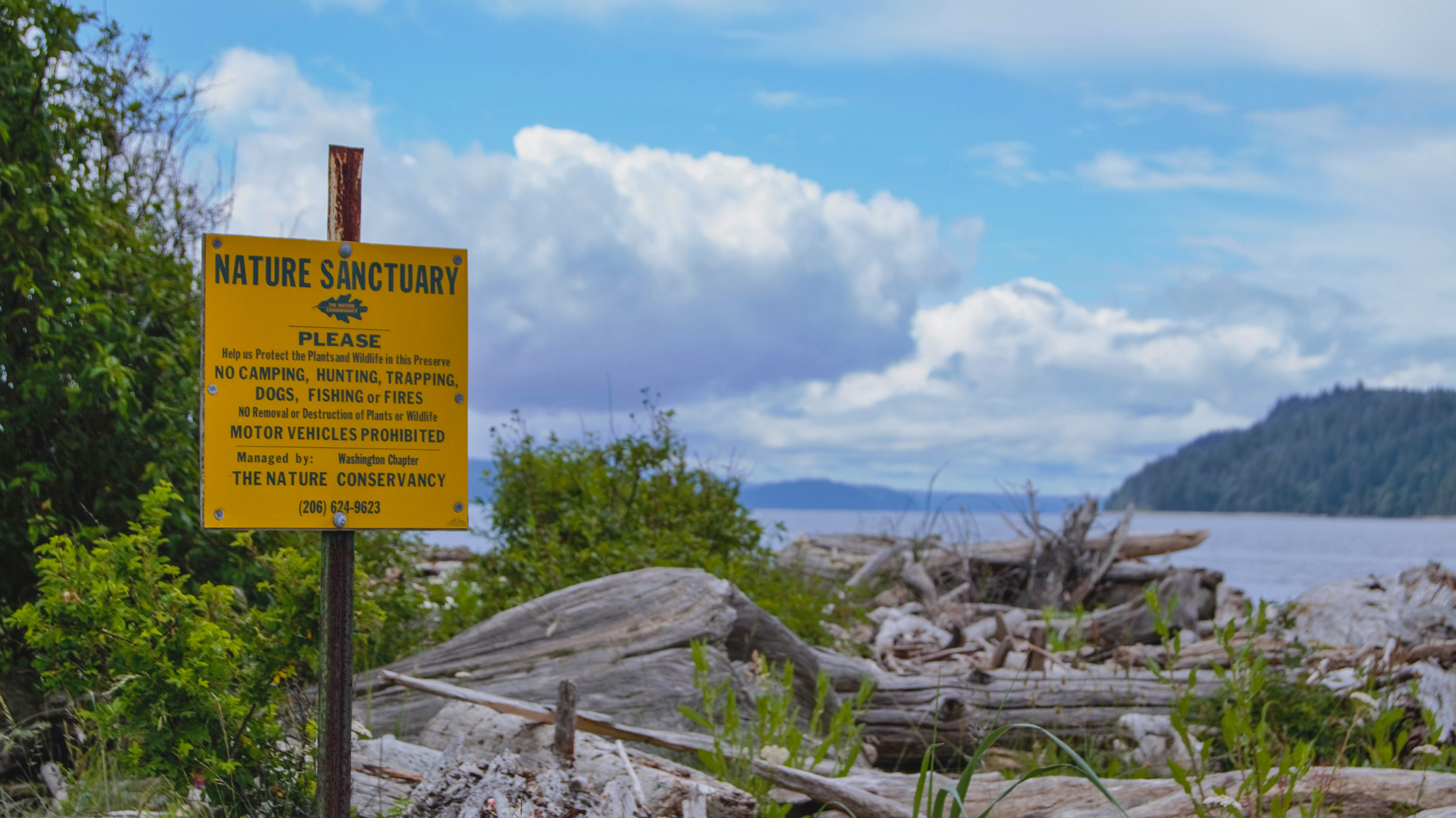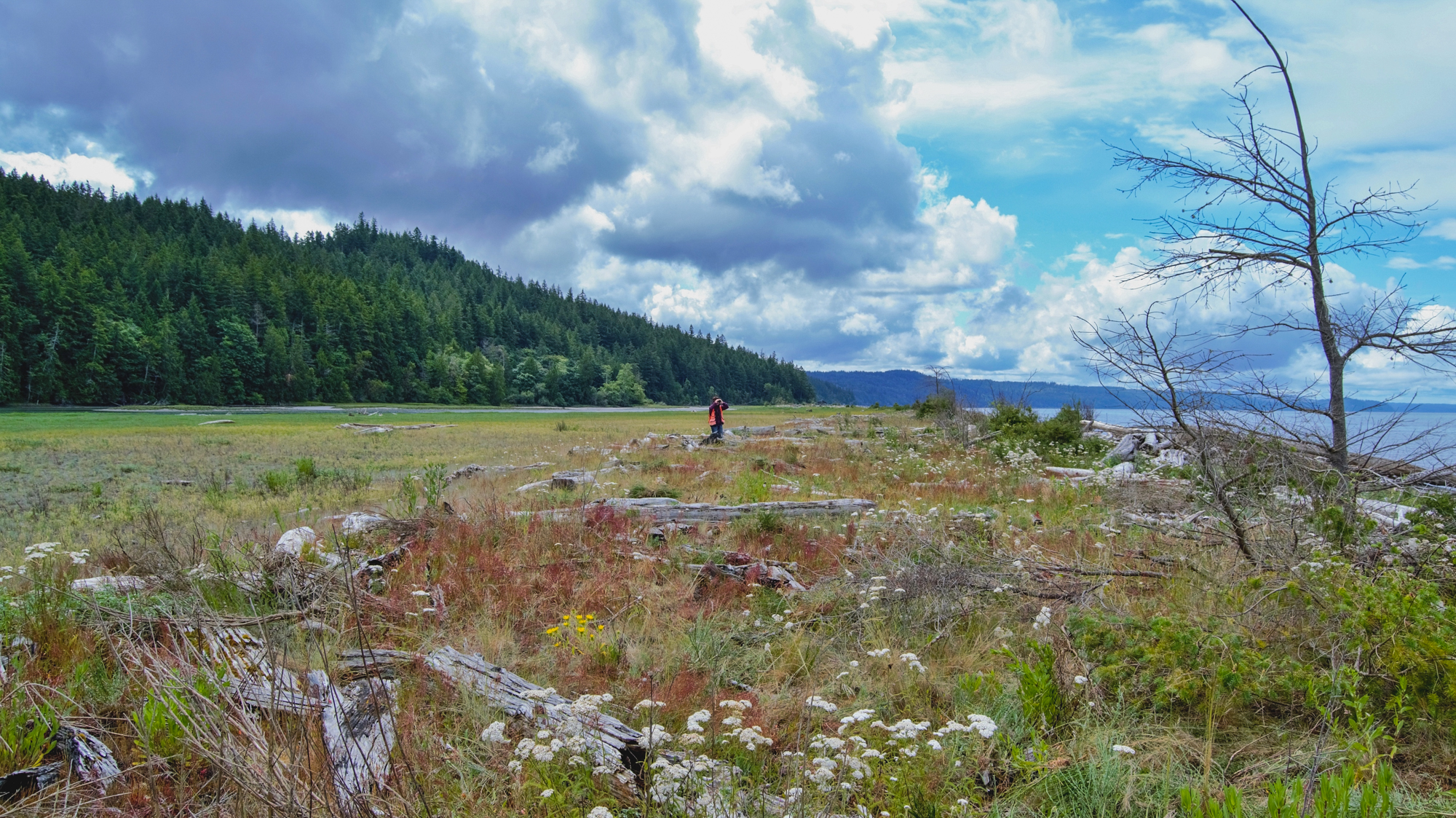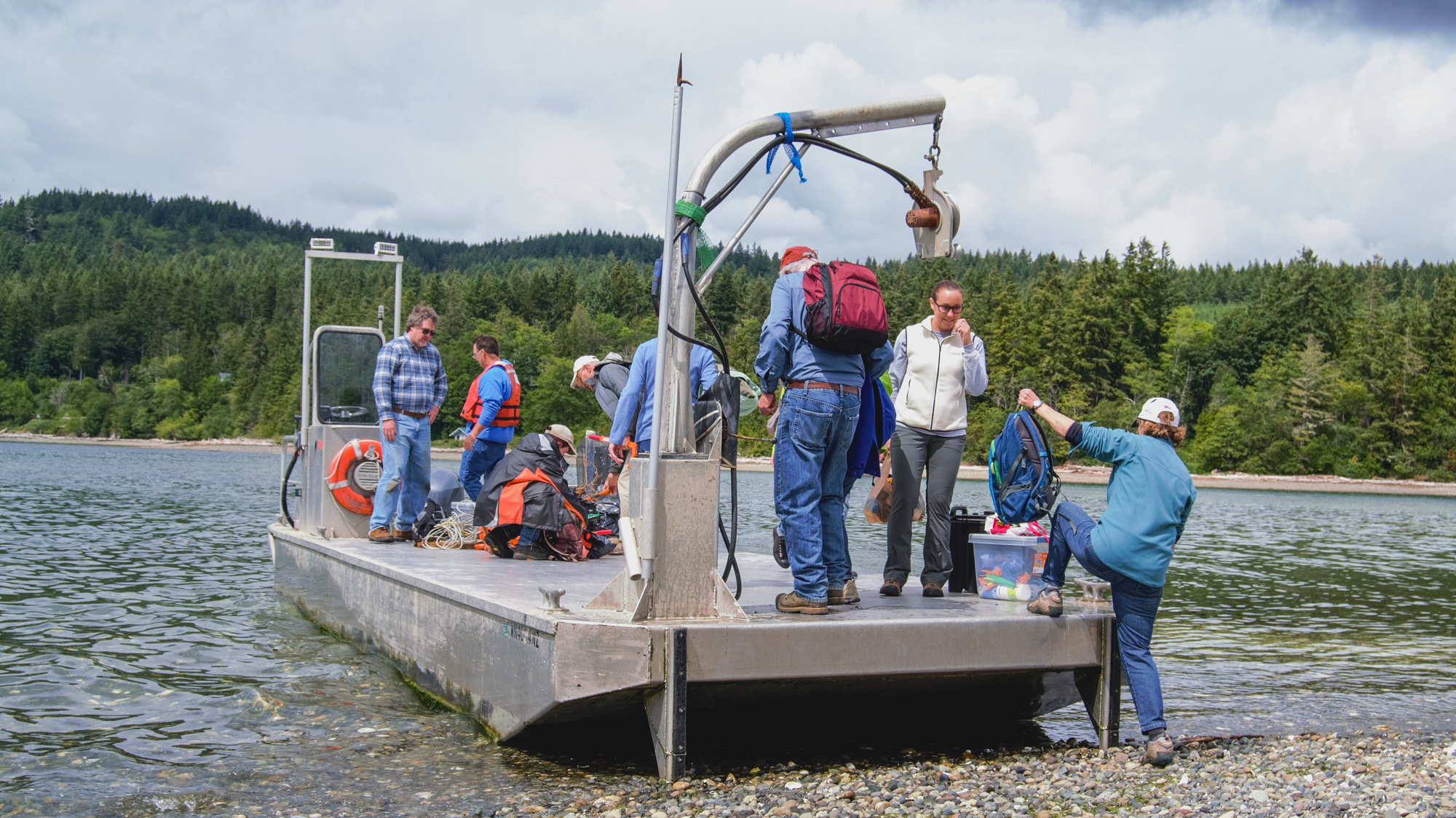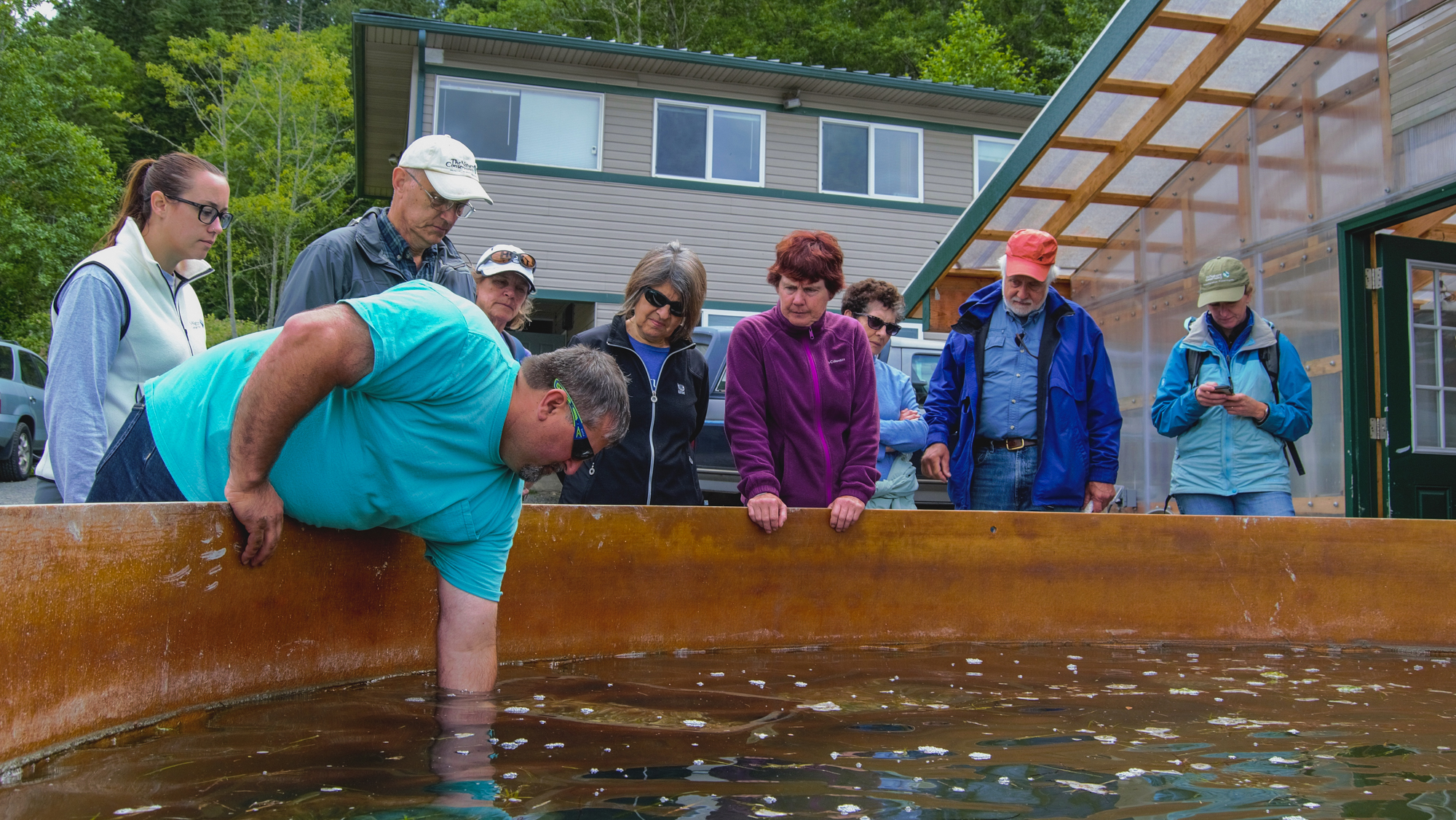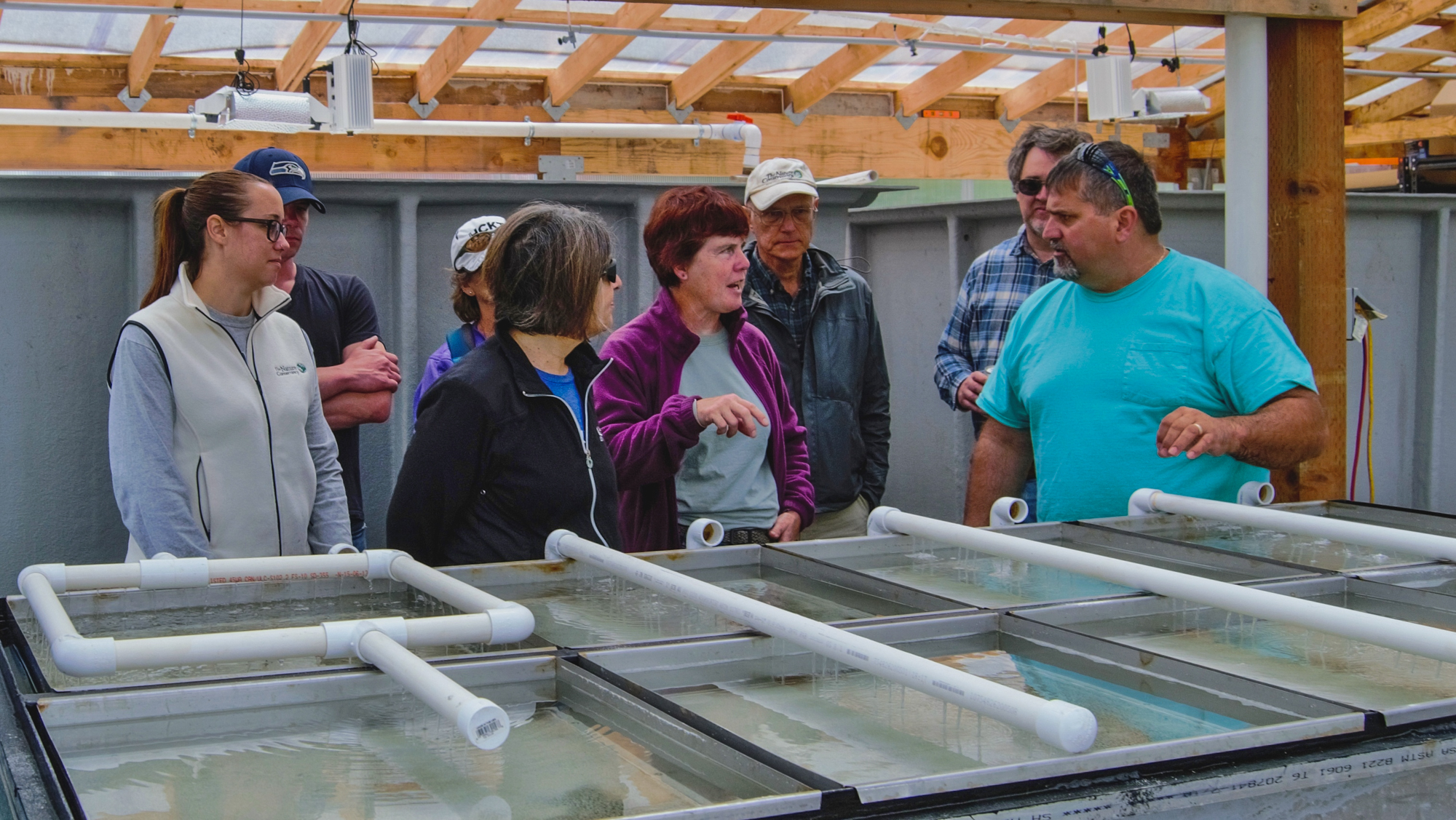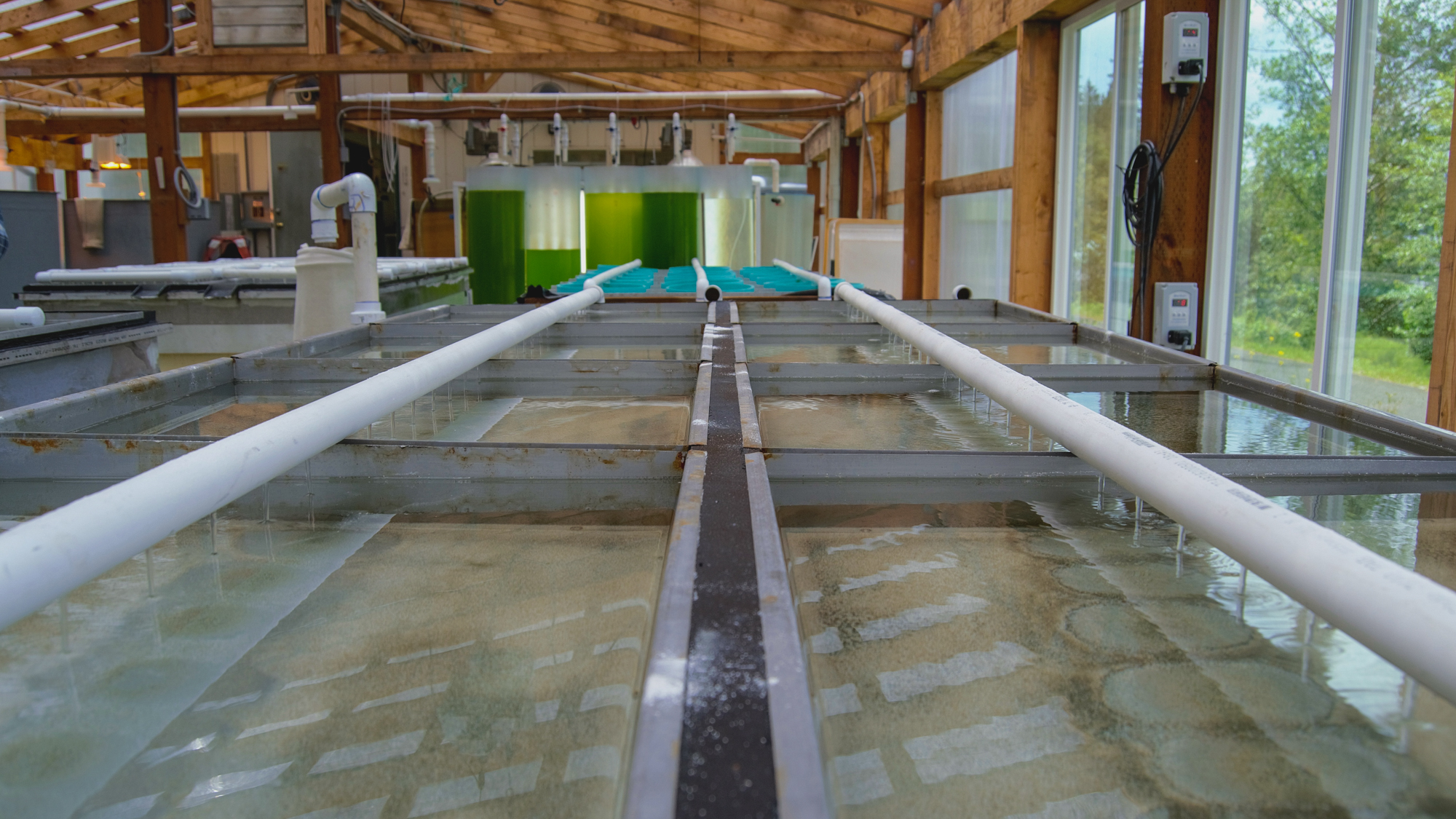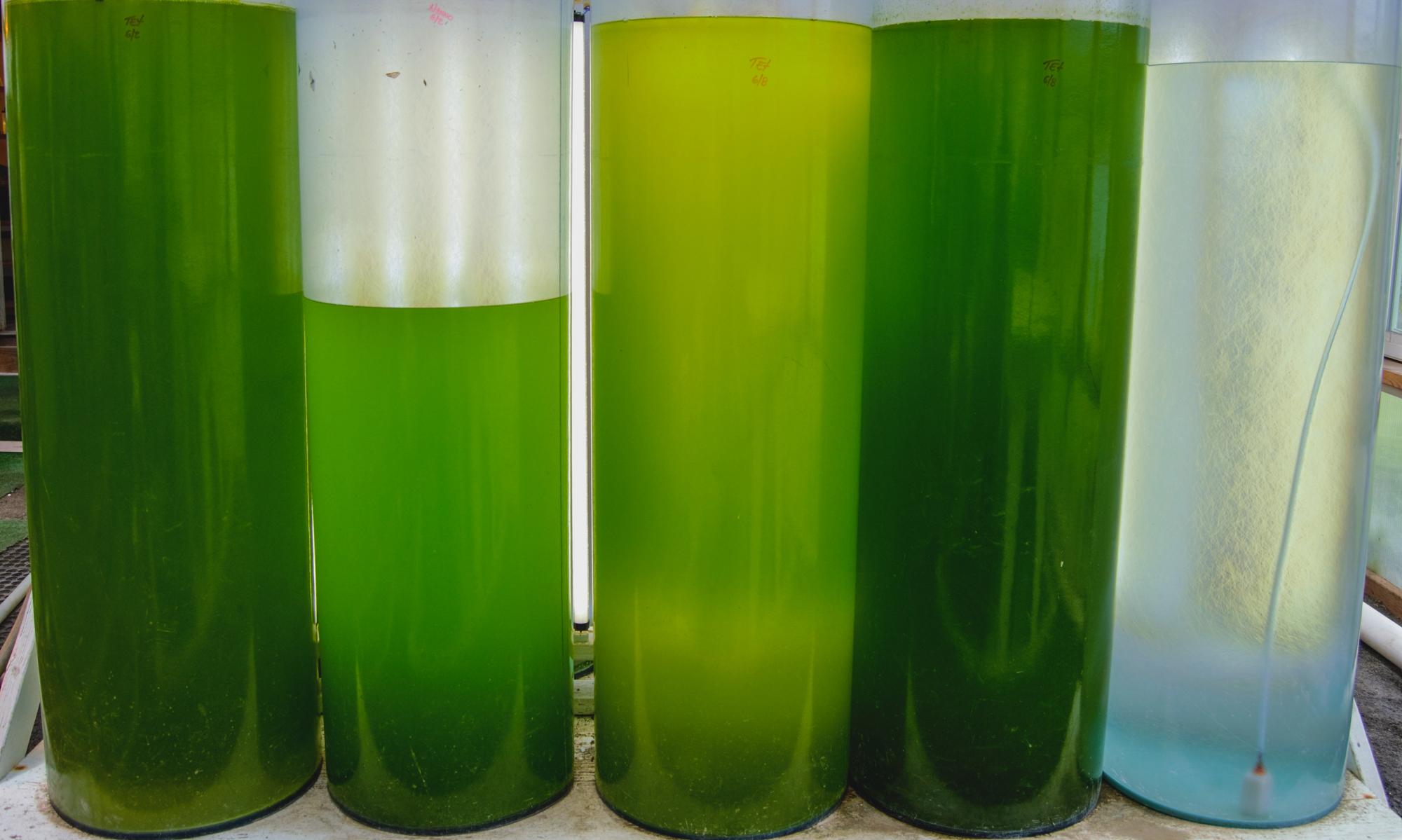Written by Joelene Boyd, Stewardship Coordinator, Puget Sound Program
Photographed by Milo Zorzino, Volunteer Photographer
While visiting the Dabob Bay conservation easement this past month I noticed something I had never seen before. At first I mistook it for a plastic oyster bag that was degrading, then I noticed more and more patches along the spit and it was only present in the pickleweed (Salicornia). Pickleweed is a native saltmarsh succulent plant that can withstand and grow in high salinity conditions.
Pickleweed (Salicornia) at Dabob Bay © Joelene Boyd
A volunteer and I decided to take a break from easement monitoring photos and get a closer look. “It looks like silly string,” we said to each other. Upon further inspection and some prodding we discovered that it was plant-like and when breaking it apart it felt like we were snapping tiny roots. One of the volunteers in our group knew exactly what it was – dodder. Its unimpressive name sells this parasitic plant short of its tenacity and impact. Dodder is a leafless and rootless filamentous plant that gets nutrients and water from host plants (in this case pickleweed) by wrapping itself and becoming intertwined to the host plant. Morning glory is a close relative of dodder which gives an indication of how persistent it can be. Once we realized what it was we noticed there were discrete patches of dodder along the eastern side of the spit. Since dodder is a native to this type of environment there is no plan to control it but it does raise a good and age old question, especially if you are a pickleweed at Dabob Bay – when is a weed a weed?
Besides discovering a cool new plant at the Long Spit easement in Dabob Bay 8 volunteers along with Melissa Watkinson and Kara Cardinal helped out to remove Scotch broom and pick up garbage along the spit. After we finished representatives from Rock Point Oyster gave us a tour of their oyster production facility.






